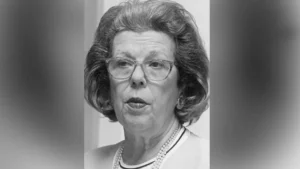Zomato Partners with ICICI Bank to Launch Zomato UPI, Streamlining Payments for Users:
Food and grocery delivery company Zomato has announced its partnership with ICICI Bank to introduce its own unified payments interface (UPI) offering called Zomato UPI. With this new feature, Zomato aims to enhance the payment experience for its users by allowing them to complete orders and make payments seamlessly within the Zomato app, without the need to switch to a separate payment app.
Buy Prime Test Series for all Banking, SSC, Insurance & other exams
Streamlining Payments with Zomato UPI:
Zomato UPI eliminates the hassle of redirecting users to external payment apps like Google Pay or PhonePe. Users can now sign up and create a new UPI ID directly within the Zomato app. This feature ensures that customers can complete their orders and make payments on the same page, enhancing convenience and efficiency.
Reducing Cash on Delivery (COD) Orders:
By introducing Zomato UPI, the company aims to reduce its reliance on cash on delivery (COD) orders. COD orders are challenging to manage and involve additional costs for handling cash. Zomato seeks to eliminate these issues and offer a smoother payment experience for its customers. With Zomato UPI, the company hopes that more customers will opt for digital UPI payments, moving away from the traditional COD option.
Enhanced Control and Customer Satisfaction:
Zomato UPI allows the company to have more control over the success rate of payments, reducing dependence on third-party payment apps and their functionality. By relying on its own UPI offering, Zomato can ensure a seamless payment experience for its customers and potentially increase customer satisfaction. This move comes at a time when the food delivery market is slowing down, making customer satisfaction a crucial aspect of maintaining a competitive edge.
Partnership with ICICI Bank:
Zomato has partnered with ICICI Bank, one of the largest private banks in India, to develop the necessary technology infrastructure for Zomato UPI. The collaboration leverages ICICI Bank’s expertise in digital payments and banking services to provide a secure and efficient payment solution for Zomato’s users. This partnership highlights Zomato’s commitment to delivering innovative and user-friendly solutions to enhance the overall customer experience.
Future Plans and Expansion:
Zomato UPI is currently in its pilot phase, allowing the company to assess adoption rates and customer engagement. Depending on the success and reception of the feature, Zomato may consider partnering with additional banks or proceed with a gradual rollout. The introduction of Zomato UPI marks a significant step towards reducing dependence on dominant players like PhonePe, Google Pay, and Paytm, who currently control a significant share of the UPI market.
Also Read: Deadline for Linking PAN with Aadhaar Extended to 30 June 2023: PFRDA




 Which Country is Known as the Land of Fe...
Which Country is Known as the Land of Fe...
 Simone Tata: The Visionary Behind Lakmé ...
Simone Tata: The Visionary Behind Lakmé ...
 When was IndiGo Airlines Founded and Who...
When was IndiGo Airlines Founded and Who...







